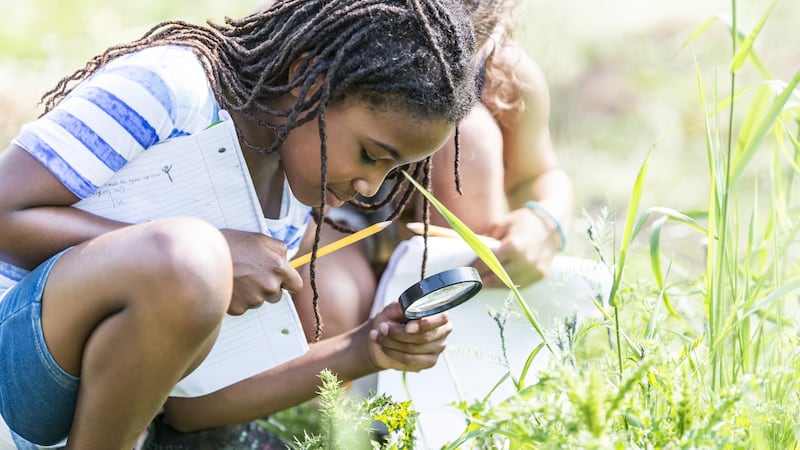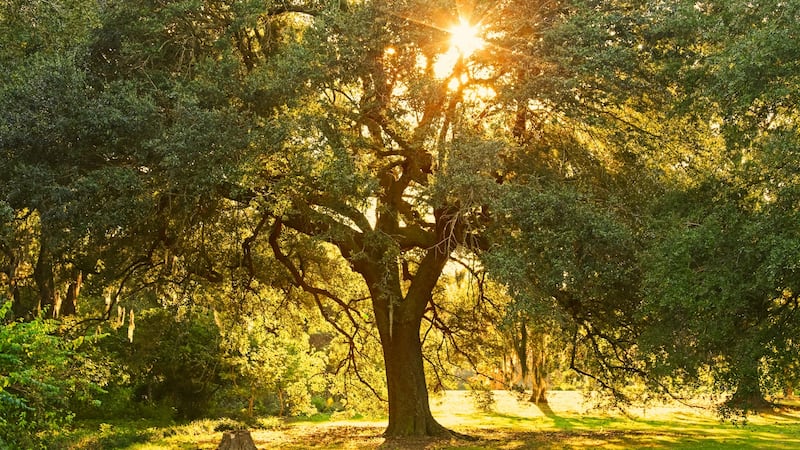It may seem quite an unusual sentiment in present circumstances, but we have been lucky in one respect. Had coronavirus arrived as we headed into November, we’d have had nothing to look forward to but long, dark winter nights followed by an antisocial Christmas.
Instead, it comes when spring is bursting out all around us as nature powers ahead, impervious to that which has halted human progress.
Our recreational area may now be restricted to just 2km from our home, but the reassuring fact is that nature is everywhere. We may no longer have access to high mountains, serene hillsides or isolated beaches. But this doesn’t mean we can’t get close and personal with the natural world or that all our fun has been cancelled. And one of our best friends in this regard is technology, which offers an opportunity for a deeper exploration of the landscape close by.
So, why not make the best of the present situation by reacquainting yourself and your family with nature in one of the ways listed below.
Have you discovered surprise beauty spots or secret places within 2km of your home in the past few weeks? Perhaps you’ve found a new river walk, cycling track or nature park; a sea of wild garlic, or hidden heritage spot. If so, we’d love to hear about them. Using the form below, tell us about it in 200 words or less, and include a photograph if you have one.
Try a mini-beasts safari
What about organising a bug hunt for the kids in the garden? Or if you don’t have a garden, a patio or the local park will work too. Even a virus can’t cancel spring and this is the time of year when all manner of mini-beasts are at their most active. So, set a challenge. How many insects can the kids find and identify, while not touching or otherwise disturbing the tiny creatures? Good places to search are on flowering plants, beneath logs and stones, and amid grassland roots.

As an exercise, give them a magnifying glass, pen and paper to note such details as colour, size and how many legs the bugs have and then send them off. Afterwards, go online with them to research the insects' names and be amazed by how many mini-beasts are sequestered in even the smallest spaces. A useful website for doing this is insectidentification.org.
Become a star-gazer
Since the dawn of history mankind has gazed in wonderment at the night sky. Our ancestors even grouped the stars into the constellations we are familiar with today, that depict imaginary mythological figures. Technology now means we can get much closer to the heavens and understand them better.

Download an app to your phone such as Skyview and then, on a clear night, take the family into the garden. Point your camera at the heavens and Skyview will identify any star, planet or constellation you see. You can even find man-made satellites such as the Hubble telescope or the International Space Station. Touch any of the stars or planets on your screen and you can get further information such as its size and distance from the Earth.
Bored? Try a board game
Inevitably there will be wet days, when exercise is impossible and everybody is cooped up inside. For such a contingency it is useful to have a board game such as Ecosystem (by Genius Games) in the cupboard, which can be played by young and old alike.
Players earn points by aligning animals and insects, such as foxes, eagles, bears, rabbits and bees, with habitats where they'll thrive. Other green-themed board games include Nature Quiz and Nature Trail. These are great fun for all the family and are available online from amazon.co.uk.
Bring nature to you
If you can’t go visiting nature, why not bring nature to you. Start by quietly observing how many bird species are already visiting your garden or balcony and then put out a bird feeder to attract more. Such feeders can be made from something as simple as a plastic bottle, with instructions on how to do this readily available online.
According to Birdwatch Ireland, some of the best foods to place in the bird feeder are: peanuts, sunflower seeds, seed mixes, grated cheese and finely chopped fruit. If you want to identify a shy bird you can't see concealed somewhere in the shrubbery, a great site to visit is greennews.ie. Here, you can listen to the recorded singing of the most common Irish birds. And don't forget we are now heading into the best time of year for the dawn chorus.
Know your flowers
A nice variation for your daily exercise walk is the identification of the plants and flowers along the way. Before you head off, download the PlantSnap app to your Android or iPhone. As you walk, watch out for the flowers and plants you encounter. There will likely be little problem with identifying the most common April flowers – daisies, dandelions, buttercups and primroses – but in wetter areas look out for marsh marigold, wood sorrel and summer snowflake, which are less well known. Later, bluebells and wild garlic will carpet the woodlands, while the May blossom will illuminate the hedgerows and buttercups the summer meadows.

To identify a flower or plant you don’t know, just use the app to take a picture: the plant will be circled automatically when it comes into focus. Then press done and the app will display both its technical and common name. Be warned, however, the app isn’t foolproof: it is fine for the more common plants but not totally reliable for more exotic varieties.
Find the way
Have you been hiking the uplands for years but always followed defined trails because you never quite found the time to master map reading and navigation? Now is your chance to put this right, and all in your own neighbourhood. A great way to start is by watching, with all the family, four excellent introductory videos. Created by Ordnance Survey Ireland and titled Go Your Own Way, the videos teaches you how to safely navigate the uplands. In easily understandable terms they explain map reading, how to use a compass, safety in the outdoors and finding heritage sites.

Then go for a walk in your lockdown area and try to follow the route on your local Discovery Series sheet while attempting to identify all the features and symbols on the map as you come to them. Further information here.
Give your mower a break
Most of us like manicured lawns because they are neat, and ideal places for family games and activities, but what we forget is that they are, for the most part, wildlife deserts. Perhaps, the time to aid biodiversity by resting your mower from part of the lawn. Wildflowers you didn’t know existed will grab their opportunity to bloom. You can help the process by leaving pieces of wood, twig piles and grass to help slugs and beetles thrive. The kids will be fascinated as a mini-jungle is created through which they can watch small creatures. Soon after, bees, butterflies, sparrows and goldfinches will come to banquet on the nectar and seeds.
See the trees from the wood
They are our largest living things yet, for the most part we view them collectively as woodlands and forests. For another variation on the family exercise walk, try to separate the trees from the wood by identifying how many species you encounter along the way. The first question you let the kids figure out is whether a tree is deciduous (with broad leaves that shed in the autumn) or coniferous (leaves are needle-shaped and the tree produces cones instead of flowers and berries).

The leaves are coming on the trees about now, so this should make them easier to identify. Look out especially for the most common Irish species: ash (small, oval, serrated leaves), oak (large leaf with rounded lobes), sycamore (large leaf with pointed lobes) and beech (pointed leaves with parallel veins). For trees you can't identify, use the Irish Woodlands Trust tree species guide by visiting treeforcommunities.ie.
Become a wildlife snapper
Almost everybody now has a sophisticated camera on their smartphone, but very few of us know how to use it correctly, particularly when it comes to nature photography. So why not use the present lockdown to put this right since you don't have to go beyond your garden. First, get to know your camera settings. Notice how it behaves in different light conditions and learn how to hold it still when snapping. There is an abundance of possible subjects in the garden from birds to snails, spiders' fruit, berries, fungi and of course flowers and leaves. Check out what the pictures are like at different times of the day and after rain has fallen. Have a competition in the family to see who can get the best shot and then share the results with your friends online and encourage them to share their nature snaps with you. For a useful introduction to taking nature pictures with a smartphone visit iceland-photo-tours.com and search for: how to take landscape photos with a smartphone.
Go for a spin
And if you really don't want to, or can't leave your home for exercise and you have a bike in the shed you can still go for a long cycle if you invest in a modest amount in a bike trainer. This allows you to cycle your bicycle when it is stationary. Since bike trainers can be quite noisy, head into the garden and mount your bike on the trainer stand. Then, you can cycle as long and as far as you want while enjoying all the sights and sounds of nature. Inexpensive bike trainers can be purchased on eBay or from Amazon.com

















